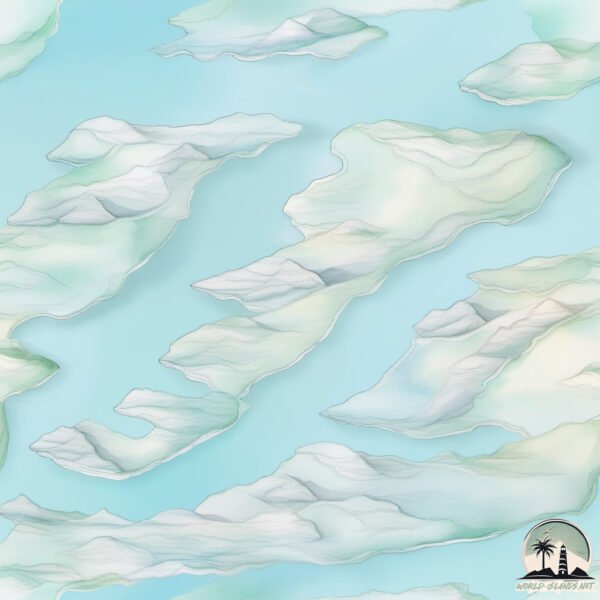Welcome to Qeqertarssuaq , a Polar island in the Davis Strait, part of the majestic Arctic Ocean. This guide offers a comprehensive overview of what makes Qeqertarssuaq unique – from its geography and climate to its population, infrastructure, and beyond. Dive into the details:
Geography and size of Qeqertarssuaq
Size: 262.4 km²Coastline: 151 kmOcean: Arctic OceanSea: Davis StraitContinent: North America
Qeqertarssuaq is a Large Island spanning 262 km² with a coastline of 151 km.
Archipel: –
Tectonic Plate: Anatolia – A tectonic microplate covering most of Turkey, it’s squeezed between the Eurasian Plate to the north and the African Plate to the south, known for significant seismic activity.
The geographic heart of the island is pinpointed at these coordinates:
Climate and weather of Qeqertarssuaq
Climate Zone: PolarClimate Details: TundraTemperature: Cold
Climate Characteristics: The tundra climate features long, extremely cold winters and short, cool summers. Vegetation is limited to mosses, lichens, and small shrubs due to the low temperatures and short growing seasons. Biodiversity is low, but some specialized species thrive.
Topography and nature of Qeqertarssuaq
Timezone: UTC-03:00Timezone places: America/Sao_PauloMax. Elevation: 1616 m Qingaq (Storo)Mean Elevation: 486 mVegetation: Herbaceous CoverTree Coverage: 16%
The mean elevation is 486 m. Dominating the island’s landscape, the majestic “Qingaq (Storo)” rises as the highest peak, soaring to impressive heights. The island is characterized by Mountains: High, steeply elevated landforms. Characterized by both a high maximum elevation (over 500 meters) and a high mean elevation, creating rugged, mountainous terrains on islands.
Dominating Vegetation: Herbaceous Cover
Vegetation: 6 vegetation zones – Very Highly Diverse Island
Infrastructure and Travelling to Qeqertarssuaq
Does the island have a public airport? no .
Does the island have a major port? no .
The mean population of Qeqertarssuaq is 0 per km². Qeqertarssuaq is Uninhabited. The island belongs to Denmark .
The name of the island resonates across different cultures and languages. Here is how it is known around the world: Arabic: جزيرة غرينلاند; German: Grönland; Spanish: Groenlandia; French: Groenland; Portuguese: Groenlândia; Russian: Гренландия; Chinese: 格陵兰岛
Continuing your journey, Qoornup Qeqertarsua is the next notable island, situated merely km away.
Vistas de la isla de Qeqertarssuaq, la Tierra de Piulip desde Ikerssuaq - Expedición Thule - 2004
Imágenes grabadas por José Naranjo durante la expedición Thule - 2004 ---------------------------------------------------------- ¡¡Suscríbete ...
Vistas de la isla de Qeqertarssuaq, la Tierra de Piulip desde Ikerssuaq - Expedición Thule - 2004
Imágenes grabadas por José Naranjo durante la expedición Thule - 2004 ...
Imágenes grabadas por José Naranjo durante la expedición Thule - 2004 ---------------------------------------------------------- ¡¡Suscríbete ...
Black volcanic beach in Qeqertarsuaq Greenland
beach #blackbeach #greenland #greenland2023 #2023 #video #shots ...
beach #blackbeach #greenland #greenland2023 #2023 #video #shots #shortvideo #ilulissat #greenlantrail #iceberg #ice #arctic ...
El pueblo Inuit abandonado de Qeqertarssuaq - Expedición Thule 2011
Imágenes del pueblo Inuit abandonado de Qeqertarssuaq (Groenlandia) ...
Imágenes del pueblo Inuit abandonado de Qeqertarssuaq (Groenlandia) situado en la isla del mismo nombre, también conocida ...
Denmark is classified as Developed region: nonG7: Developed economies outside of the Group of Seven, characterized by high income and advanced economic structures. The level of income is High income: OECD.
News – Latest Updates and Headlines from Qeqertarssuaq
Stay informed with the most recent news and important headlines from Qeqertarssuaq. Here’s a roundup of the latest developments.
Loading...
Please note: The data used here has been primarily extracted from satellite readings. Deviations from exact values may occur, particularly regarding the height of elevations and population density. Land area and coastline measurements refer to average values at mean high tide.

